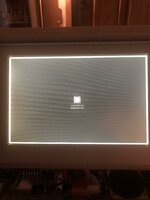1. Have any of your customers tried the Battery Eliminator in a 5126 Backlit version?
2. Also, does your Battery Eliminator also eliminate the need for the 9V battery?
Could be I'm mistaken, but I thought the 9V was to preserve PRAM only when disconnecting/changing the main battery. So if there is no main battery (thanks to your device), and if you close the battery cover which affects the microswitch leading to the 9V, then the 9V would never get used, right? Or would you be able to just keep the battery cover off since there is no battery anymore when your product is installed, and then the 9V would get used to preserve PRAM only when the AC Adapter is removed from the wall socket? Or do you just eliminate the 9V entirely and live with the fact your PRAM will be lost every time you unplug from the wall?
1: I haven't received feedback about which Portable versions the Battery Eliminator has been used in. To my knowledge the Backlit's Modem slot is the same as the original M5120 so there should be no electrical difference between them.
2: The PCB does contain a provision for a 9v battery holder to be soldered on, but I haven't tried it. Supercapacitors have a relatively high rate of charge loss, and I don't know how that drain factor would play into battery life. This is the BT1 solder points to the right of the supercapacitors, where you would solder the + and - (labeled on the PCB) leads from a 9v battery holder. Again, this is currently untested but if there's interest in a PRAM-retaining option I'll check that it works properly.
You are correct that the 9v battery in a Portable is basically the PRAM battery. This is due to where the PRAM values are actually stored (not in a super-low-power RTC chip like most Macs), which requires the main 5.2v rail to be powered on all the time. Can't imagine PRAM battery life is all that great to begin with.
The Battery Eliminator installation requires that you unplug the original battery harness cable, which totally removes the 9v battery from the circuit. With the Eliminator installed, when you unplug from the wall you have a few minutes of PRAM retention at most (have not tested how long it lasts) as the supercapacitors are slowly drained to power the PRAM and RTC retention.
The Battery Eliminator is somewhat targeted to the people that, like me, aren't using their vintage systems all the time. This makes it safe to store away your Portable for a year or more and have it pop right back to life the next time you want to enjoy your vintage system. No lead acid batteries to maintain, and no 9v batteries to cause leaks and damage.
Sorry, one more question...
Your
Macintosh Portable Adapter For BlueSCSI V2 requires knowledge of the
motherboard revision. Is there a way to find that out via the Bar Code serial number on the bottom of the plastic case, or is it necessary to take the machine completely apart to view the actual motherboard?
I have updated the description on the Mac Portable Adapter page to better explain what this is. The BoardRevision does not refer to the Mac Portable's PCB. It's referring to the BlueSCSI hardware version, which is easily visible in the silkscreen by the BlueSCSI logo.
The 2023.10a desktop hardware design had to move the mounting holes around, so the only difference in the adapter kit is the printed bracket. Electrically the adapter and cable are not different.

